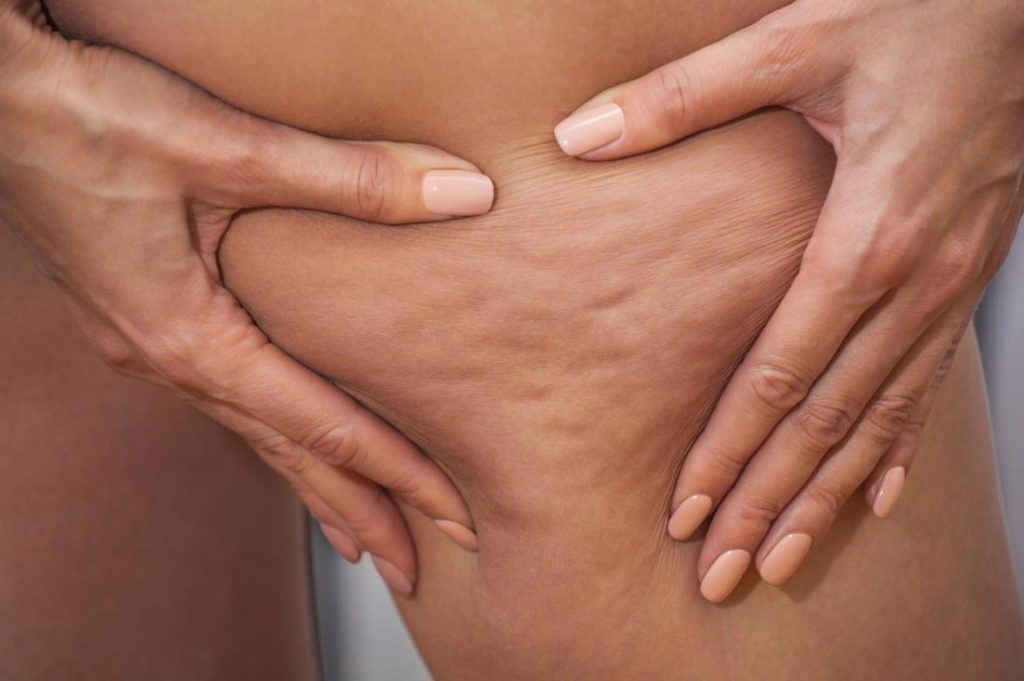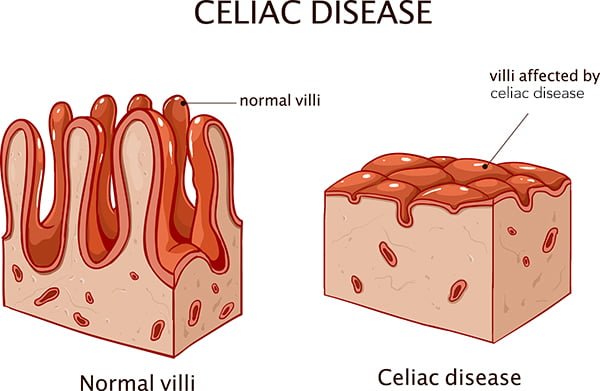This is a term which is used for lumpy and dimpled flesh of the thighs, abdomen, buttocks and hips. This is the most common condition in adolescent and adult women. It can affect both men and women but it is more common in women. This is a not serious medical condition but the cellulite can embarrass you. There are many cellulite treatments, such as cellulite creams or massages which are promising that they will help you. But most of these products are not giving the promising results. Many doctors are studying possible medical treatments that will help in the treatment of cellulite. There are some natural ways which you can take to slightly improve the appearance of cellulite. It is known fact that between 80 – 90% of women will probably experience cellulite [1]. This condition is also known as orange – peel skin due to its texture. There are many different treatments for cellulite but the effect of them is temporary. An active lifestyle, smoking cessation and a diet low in fat can help to reduce the incidence of cellulite.
Symptoms of Cellulite
Contents
Cellulite is looking like dimpled or bumpy skin. In some cases, it is described as a having orange peel or cottage cheese texture. If you have mild cellulite, then you can see it only if you pinch in an area where you have cellulite, such as the thighs. If you have more severe cellulite, then it makes your skin appear rumpled and bumpy with areas of valleys and peaks. Cellulite is most common around the buttocks and thighs but also it can be found on the upper arms, lower abdomen and breasts. This is not a serious medical condition and treatment is not necessary. Many doctors are considering the cellulite as a normal occurrence. If you are concerned about the appearance of your skin, then you should talk with your doctor or visit dermatologist or plastic surgeon. [2,3]

Grades of cellulite
There are known three grades of cellulite [2,3]:
- Grade 1 or mild: In this grade of cellulite, there is an “orange – peel” appearance with between one and four depressions. There is a slightly “draped” or sagging appearance to your skin.
- Grade 2 or moderate: In this grade of cellulite there are between 5 and 9 medium – depth depressions. There is a cottage cheese appearance and your skin is appearing moderately draped.
- Grade 3 or severe: In this grade of cellulite, there is a mattress appearance and there are ten or more deep depressions and your skin is severely draped.
Causes of Cellulite
It is not known a lot what the cause for cellulite is. Cellulite is involving fibrous connective cords which tether the skin to the underlying muscle and with the fat lying between. When the fat cells are accumulating, then they are pushing up against the skin while the long and tough cords are pulling down which is creating a dimpling or uneven surface. Hormones are playing a big role in the cellulite development. Prolactin, thyroid hormones, noradrenaline, insulin and estrogen are part of the cellulite production process. There are some studies in which are said that the estrogen in women decrease in the approach to menopause and the blood flow to the connective tissue under the skin is also decreasing. The lower circulation means that there will be less oxygen in the area which will result in lower collagen production and as the estrogen levels fall the fat cells will enlarge. This is making the fat deposits more visible. The fat which is located under the skin is protruding through weakening connective tissue which is causing the skin to become less elastic, thinner and more likely to sag. This will increase the chances of cellulite developing.
Risk factors of Cellulite
This condition is more common in women than men. It is known fact most women develop some cellulite after the puberty. This is happening because the women’s fat is typically distributed in the buttocks, hips and thighs which are the most common areas for cellulite. Also when we are getting older [4], we are having more chances of getting cellulite because the skin is losing the elasticity. If you gain weight, then it can make the cellulite more noticeable but also there are some cases when lean people can have cellulite. Cellulite tends to run in families so genetics are playing a big role if you will have cellulite. Pregnancy can increase your chances of getting cellulite. Also when you are having inactive lifestyle, then it will increase your chances of getting cellulite. [5]
References:
[1] Harmon K. Is cellulite forever? Scientific American. 2009.
[2] Sadick N. Treatment for cellulite. International Journal of Women’s Dermatology. 2018;5(1):68-72.
[3] Luebberding S, Krueger N, Sadick NS. Cellulite: An evidence-based review. American Journal of Clinical Dermatology. 2015;16(4).
[4] Mukherjee S, Date A, Patravale V, et al. Retinoids in the treatment of skin aging: an overview of clinical efficacy and safety. Clinical Interventions in Aging. 2006;1(4):327–8.
[5] Mercola J. What causes cellulite and can it go away? 2017. Retrieved from fitness.mercola.com/sites/fitness/archive/2017/02/24/what-causes-cellulite.aspx




